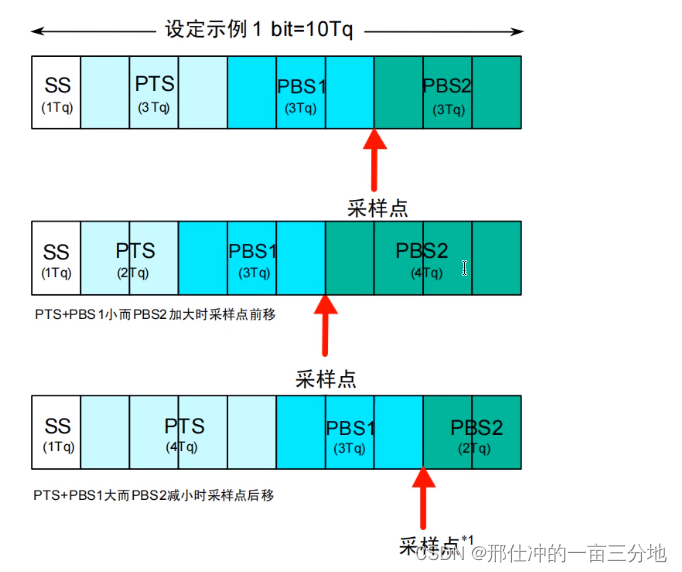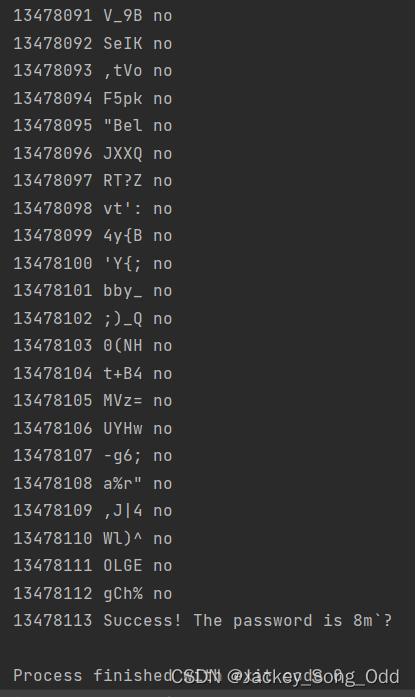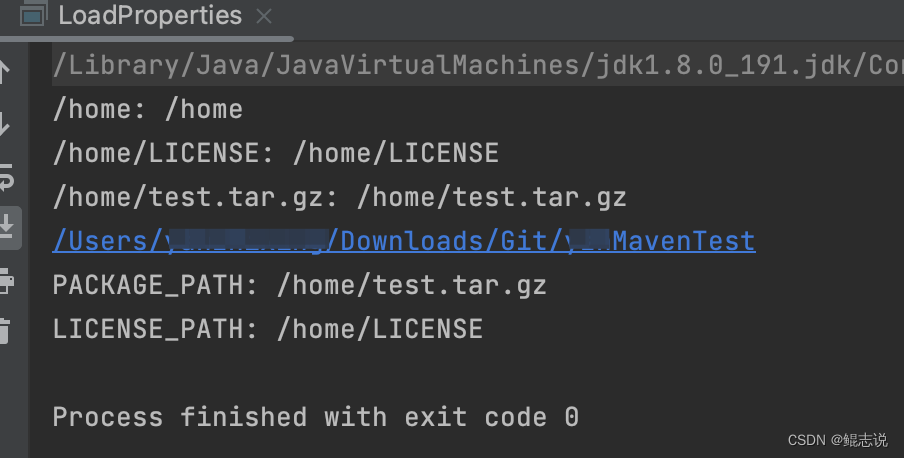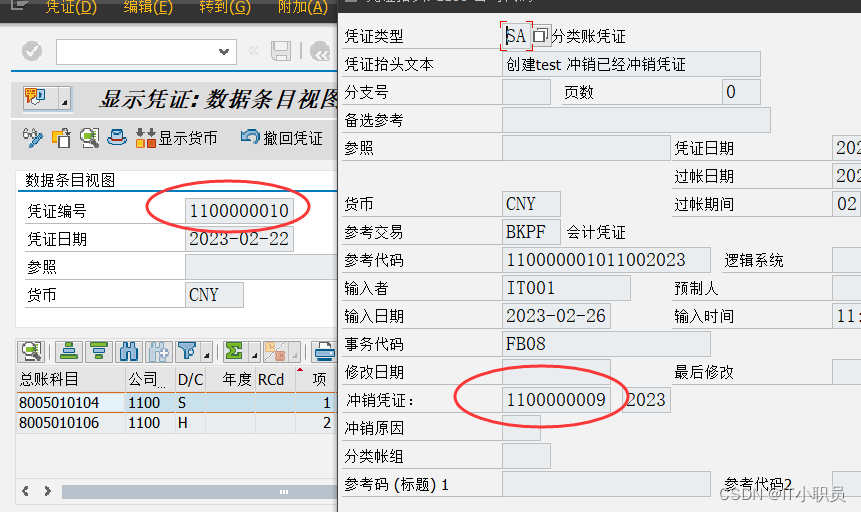深度优先/广度优先遍历
深度优先:
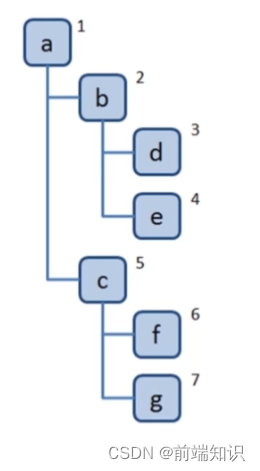
访问根节点
对根节点的 children 挨个进行深度优先遍历
const tree = {
val: "a",
children: [
{
val: "b",
children: [
{
val: "d",
children: [],
},
{
val: "e",
children: [],
},
],
},
{
val: "c",
children: [
{
val: "f",
children: [],
},
{
val: "g",
children: [],
},
],
},
],
};
const dfs = (root) => {
console.log(root.val);
root.children.forEach((child) => {
dfs(child);
});
};
dfs(tree);广度优先:
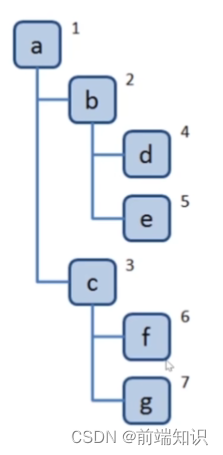
新建立一个队列,根节点入队
对头出队并访问
把对头的children挨个入队
重复2,3,直到队列为空
const tree = {
val: "a",
children: [
{
val: "b",
children: [
{
val: "d",
children: [],
},
{
val: "e",
children: [],
},
],
},
{
val: "c",
children: [
{
val: "f",
children: [],
},
{
val: "g",
children: [],
},
],
},
],
};
const bfs = (root) => {
const q = [root];
while (q.length > 0) {
const n = q.shift();
console.log(n.val);
n.children.forEach((child) => {
q.push(child);
});
}
};
bfs(tree);二叉树的先中后序遍历
二叉树:每个节点最多只能有两个节点
先序遍历(根、左、右):
访问根节点
对根节点的左子树进行先序遍历
对根节点的右子树进行先序遍历
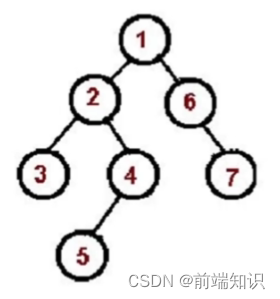
1、2、3、4、5、6、7
const tree = {
val: "1",
left: {
val: "2",
left: {
val: "3",
left: null,
right: null,
},
right: {
val: "4",
left: {
val: "5",
},
right: null,
},
},
right: {
val: "6",
left: null,
right: {
val: "7",
right: null,
left: null,
},
},
};
const preorder = (root) => {
if (!root) return;
console.log(root.val);
preorder(root.left);
preorder(root.right);
};
preorder(tree);中序遍历(左、中、右):
对根节点左子树遍历
访问根节点
对根节点右子树遍历
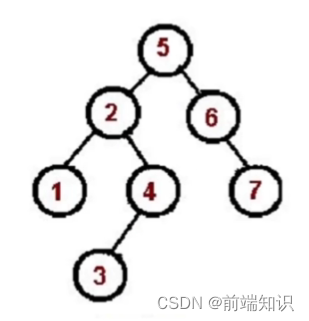
1、2、3、4、5、6、7
const tree = {
val: "5",
left: {
val: "2",
left: {
val: "1",
left: null,
right: null,
},
right: {
val: "4",
left: {
val: "3",
},
right: null,
},
},
right: {
val: "6",
left: null,
right: {
val: "7",
right: null,
left: null,
},
},
};
const inorder = (root) => {
if (!root) return;
inorder(root.left);
console.log(root.val);
inorder(root.right);
};
inorder(tree);后序遍历(左、右、根):
对根节点左子树遍历
对根节点右子树遍历
访问根节点
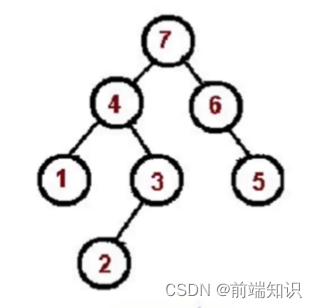
1、2、3、4、5、6、7
const tree = {
val: "7",
left: {
val: "4",
left: {
val: "1",
left: null,
right: null,
},
right: {
val: "3",
left: {
val: "2",
},
right: null,
},
},
right: {
val: "6",
left: null,
right: {
val: "5",
right: null,
left: null,
},
},
};
const postorder = (root) => {
if (!root) return;
postorder(root.left);
postorder(root.right);
console.log(root.val);
};
postorder(tree);非递归写法
递归调用函数,会不断的入栈出栈,所以考虑用栈实现。
先序遍历:
// 递归
const preorder = (root) => {
if (!root) return;
console.log(root.val);
preorder(root.left);
preorder(root.right);
};
// 非递归
const preorder = (root) => {
if (!root) return;
const stack = [root]
while(stack.length){
const n = stack.pop()
console.log(n.val)
// 栈后进先出,先右后左
if(n.right) stack.push(n.right)
if(n.left) stack.push(n.left)
}
}中序遍历:
// 递归
const inorder = (root) => {
if (!root) return;
inorder(root.left);
console.log(root.val);
inorder(root.right);
};
// 非递归
const inorder = (root) => {
if (!root) return;
const stack = [];
let p = root;
while (stack.length || p) {
// 所有的左子树进栈
while (p) {
stack.push(p);
p = p.left;
}
//最尽头的左子树出栈
const n = stack.pop();
console.log(n.val);
p = n.right;
}
};后续遍历:
const postorder = (root) => {
if (!root) return;
postorder(root.left);
postorder(root.right);
console.log(root.val);
};
// 先序遍历是 根、左、右,后续遍历时:左、右、根,倒过来是根、右、左,只需要把先序遍历的后面两个颠倒顺序
const postorder = (root) => {
if (!root) return;
const outputStack = [];
const stack = [root];
while (stack.length) {
const n = stack.pop();
outputStack.push(n);
if (n.left) stack.push(n.left);
if (n.right) stack.push(n.right);
}
while (outputStack.length) {
const n = outputStack.pop();
console.log(n.val);
}
};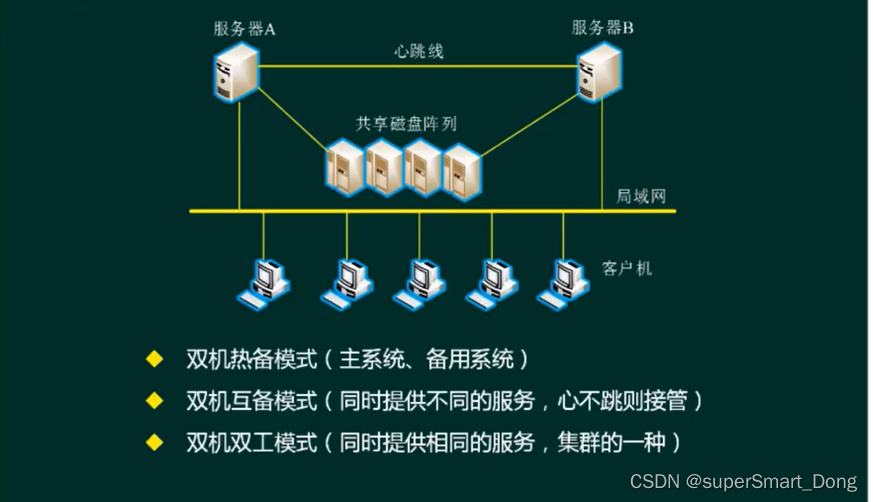


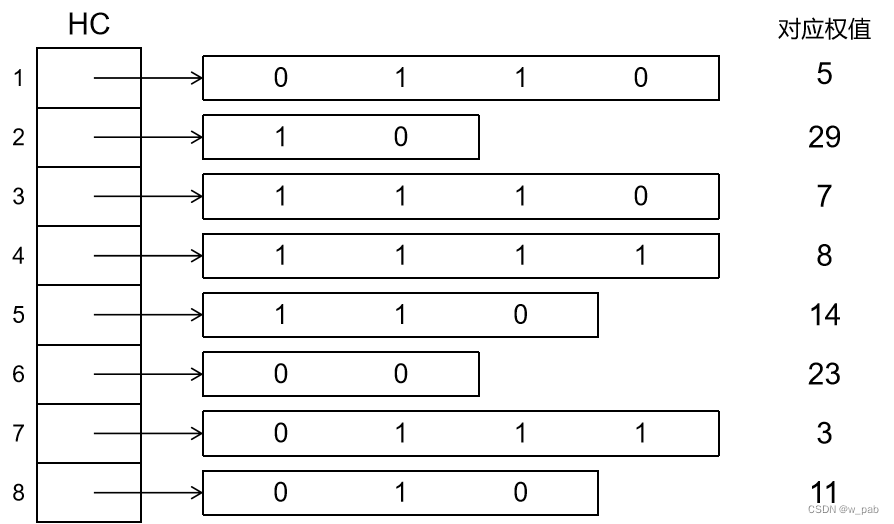

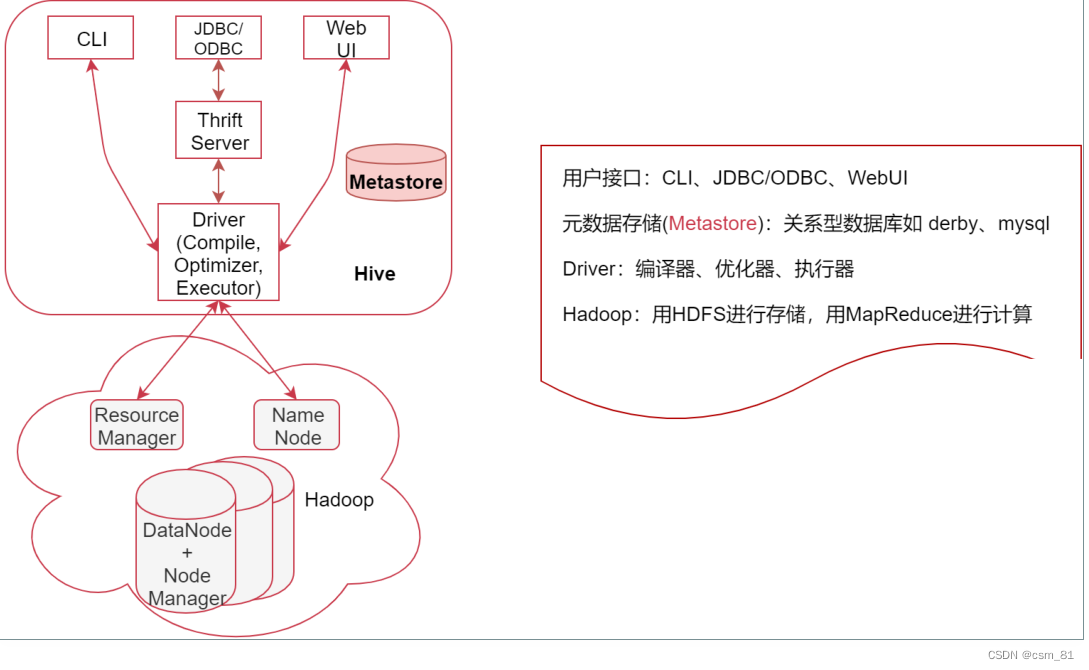

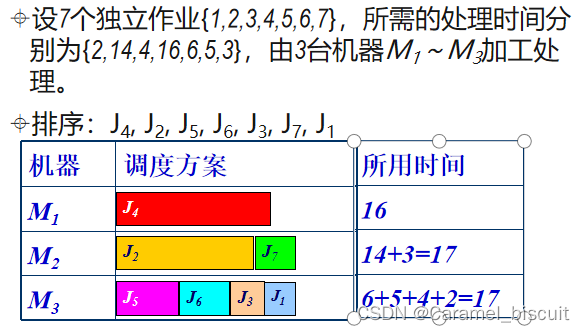
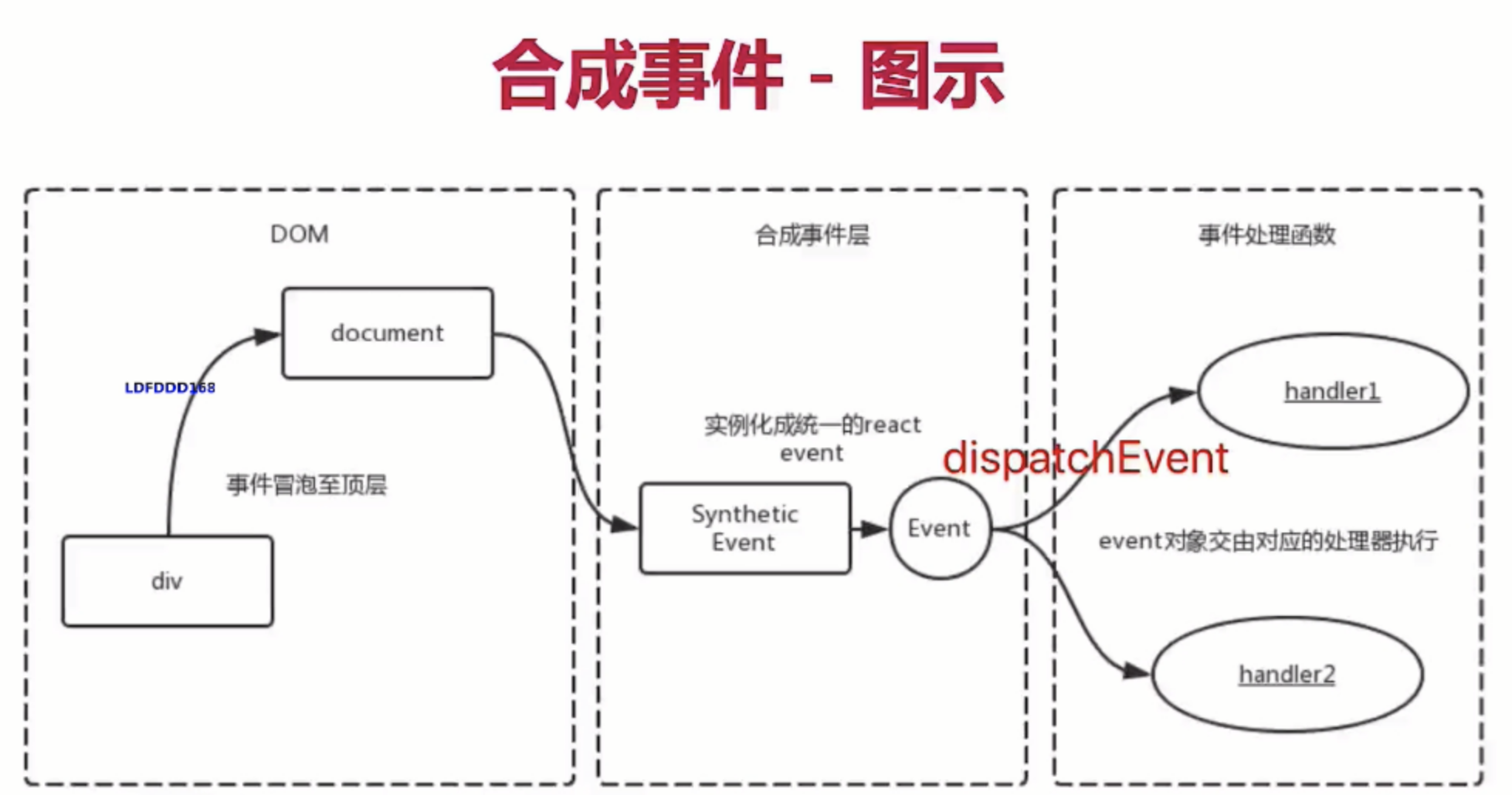
![[计算机网络(第八版)]第三章 数据链路层(学习笔记)](https://img-blog.csdnimg.cn/ba6f0d60ebe74661b339308d5b442428.png)


